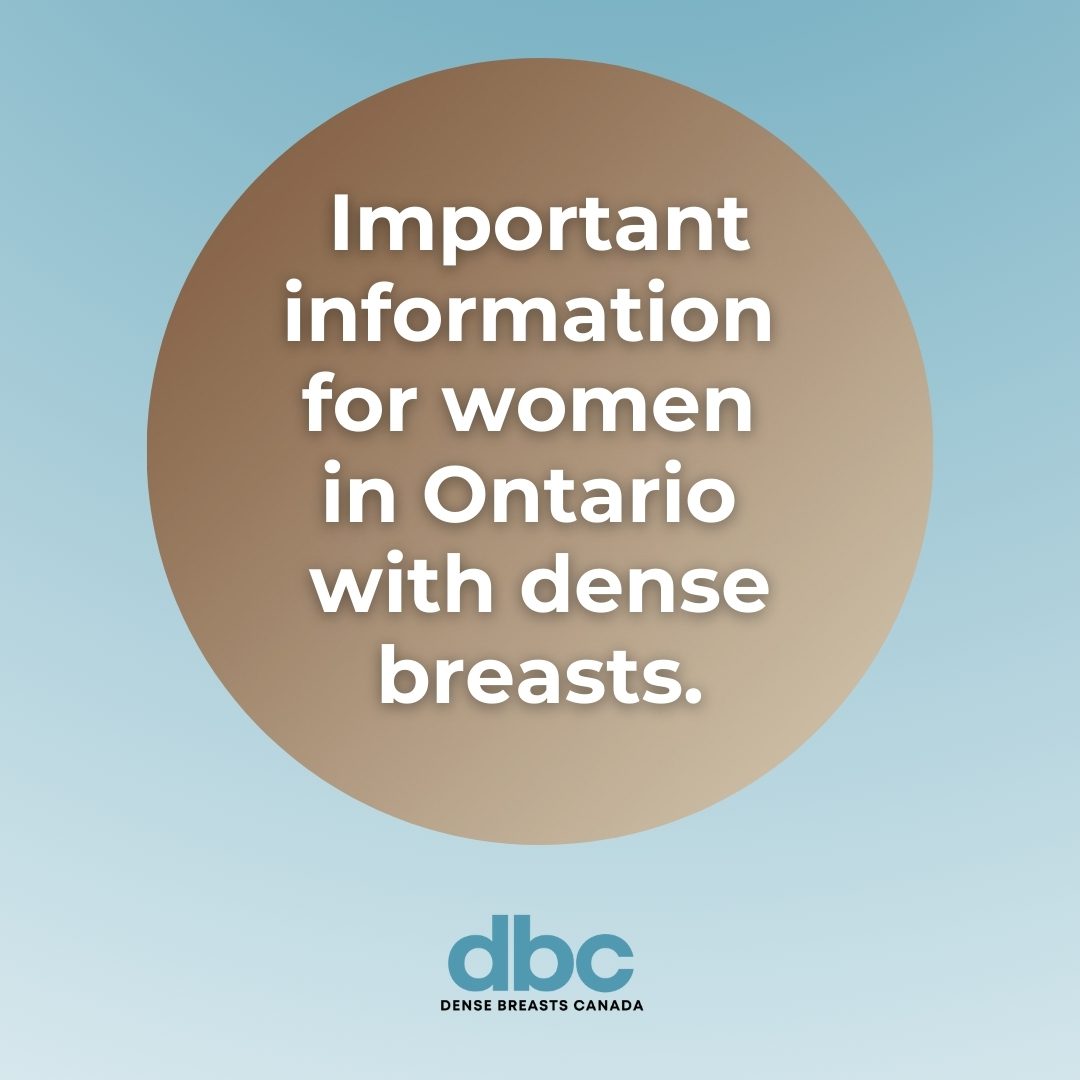Important update for women in Ontario with Category D density

YOU CAN REQUEST SUPPLEMENTAL SCREENING IF YOU HAVE CATEGORY C OR D DENSITY:
CATEGORY D
1. Ultrasound + mammogram yearly, OR
2. MRI + mammogram every two years.
Discuss options with your healthcare provider. Access depends on capacity in your area, and a referral is required.
KEY POINTS:
• MRI/Ultrasound:People with an abnormality and those deemed high-risk will get first priority before those requesting screening MRI/Ultrasound
• Access and wait times vary by location; not all sites offer these tests.
• Supplemental screening is not part of the Ontario Breast Screening Program yet. That means results and follow-ups are managed by your primary care provider. OHIP covers the cost.
• Anyone with category D density who has supplemental screening will still be asked to return every year for a mammogram as well.
CATEGORY C
• You can request ultrasound. MRI is given to those who qualify for Ontario’s High Risk Program.
IMPORTANT – HOW TO CALCULATE YOUR LIFETIME RISK TO SEE IF YOU QUALIFY FOR THE HIGH RISK PROGRAM
Consider using the IBIS risk calculator to check your lifetime breast cancer risk: IBIS Risk Calculator. https://ibis.ikonopedia.com/
In Ontario, a lifetime risk over 25% is considered high risk and qualifies for MRI screening.
For breast density, select BIRADS—Category D is “extremely dense.” Add detailed family history (breast/ovarian cancer) for all members if applicable. See your lifetime risk.
Watch our 1-minute explainer video for more info! https://www.youtube.com/watch?v=to2x_C7D458 Contact us if you have any questions- we can walk you through IBIS
CONCERNS: Information has been sent to health care providers but we do not know if they are all familiar with it. We recommend you print off the page from Cancer Care Ontario (link below) for your discussion about supplemental screening.
Here is the write up from Cancer Care Ontario to health care providers
• One way to improve cancer detection in people with dense breasts is through supplemental screening, which involves screening with another type of imaging test in addition to mammography. Types of breast imaging tests that can be used for supplementary screening include ultrasound and magnetic resonance imaging.
• Evidence on the benefit of supplemental screening for breast cancer has been evolving. Ontario Health conducted a health technology assessment to review published evidence on the effectiveness and cost-effectiveness of supplemental screening. In December 2023, based on guidance from the Ontario Health Technology Advisory Committee, Ontario Health released a recommendation to the Ministry of Health to publicly fund supplemental breast cancer screening for people with BI-RADS D density. Ontario Health recommended publicly funding supplemental screening for people with BI-RADS D density, but not for people with BI-RADS densities A to C due to insufficient clinical evidence on the benefit of supplemental screening in these populations.
• Primary care providers may choose to discuss the benefits and risks of supplemental screening with their patients who have BI-RADS D density and refer them for supplemental screening outside of the OBSP. For example, the health technology assessment showed that the benefits of supplemental screening in people with dense breasts include improving cancer detection rates and reducing the likelihood of interval cancers, but its harms include higher abnormal recall rates and more people getting additional testing, such as breast biopsies. Read more about the recommendation and health technology assessment on the https://www.hqontario.ca/evidence-to-improve-care/health-technology-assessment/reviews-and-recommendations/supplemental-screening-as-an-adjunct-to-mammography-for-breast-cancer-screening-in-people-with-dense-breasts
• The OBSP will continue to recall participants with BI-RADS D density for a screening mammogram one year after their last mammogram and will continue to recall these participants for regular screening regardless of whether they have had supplemental screening.
• Ontario Health plans to update the OBSP to include supplemental screening for people with BI-RADS D density based on the health technology assessment and expert panel input in the future.
https://www.cancercareontario.ca/en/guidelines-advice/cancer-continuum/screening/breast-density-provider-information
